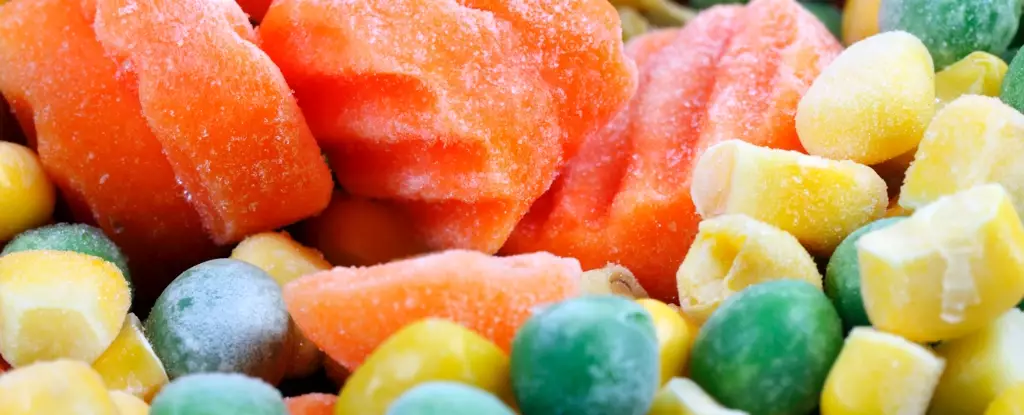The cost of living crisis is causing many people to tighten their budgets, especially when it comes to their weekly supermarket shopping. Fresh fruit and vegetables, in particular, are often the first to be sacrificed. Data from the Australian Bureau of Statistics (ABS) indicates that Australians were consuming less fruit and vegetables in 2022-23 compared to the previous year. This decline in consumption is concerning, as the majority of Australians already do not meet the recommended daily intake of two serves of fruit and five serves of vegetables. These guidelines are essential for maintaining optimal health as they provide vital vitamins, minerals, and fiber.
While fresh produce is often considered the most nutritious option, there are other ways to ensure that you still get the benefits of fruit and vegetables even when facing financial constraints. Frozen fruits and vegetables are a convenient and budget-friendly alternative. In fact, frozen produce may contain higher levels of certain nutrients such as vitamin C and E compared to fresh produce, as they are frozen at peak ripeness. Additionally, freezing fruits and vegetables at home can help reduce food waste and allow you to enjoy these nutritious foods long after they are out of season.
Canned vegetables and fruit are another cost-effective option that can offer the same nutritional benefits as fresh produce. The canning process acts as a preservation technique, eliminating the need for additional preservatives, including salt. While some heat-sensitive nutrients like vitamin C may decline slightly during the cooking process, canned fruits and vegetables are still a convenient and nutritious choice. Consider adding canned produce to soups, stews, and casseroles for a quick and easy meal.
Fermented foods are an excellent way to incorporate more fresh produce into your diet while on a tight budget. Fermentation helps retain the vitamins and minerals present in fresh vegetables, and it can also enhance the food’s nutritional profile by creating new nutrients and improving absorption. Furthermore, fermented foods contain probiotics, which are beneficial for gut health. Adding fermented vegetables to your meals can not only increase your nutrient intake but also support a healthy digestive system.
If you are looking to maximize your intake of fresh produce without breaking the bank, there are several strategies you can implement:
– Buy in season: Local seasonal vegetables and fruit are often more affordable than imported out-of-season options.
– Embrace “ugly” produce: Many supermarkets offer imperfect fruits and vegetables at discounted prices, which are equally nutritious and delicious.
– Reduce waste: Proper meal planning and storage can help you minimize food waste and save money on fresh produce.
– Swap and share: Websites and apps dedicated to food swaps can connect you with local resources to trade or receive free fresh produce.
– Start gardening: Even with limited space, growing your own herbs, tomatoes, and other produce can offset the cost of buying fresh fruits and vegetables.
By being mindful of your food choices and implementing these budget-friendly strategies, you can continue to prioritize your health and well-being even during times of financial uncertainty. Remember, fresh produce is essential for a balanced diet, and there are always creative ways to incorporate it into your meals without breaking the bank.


Leave a Reply